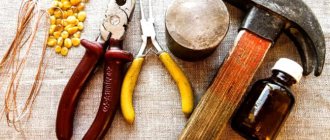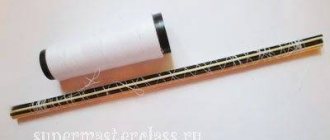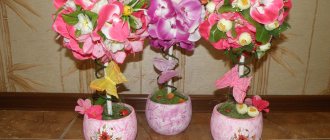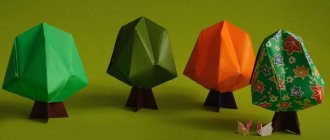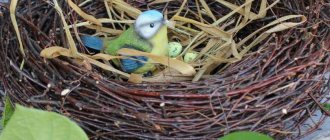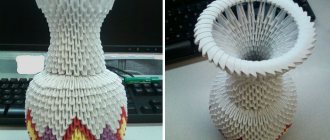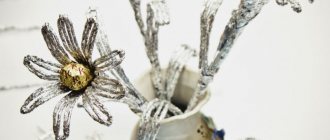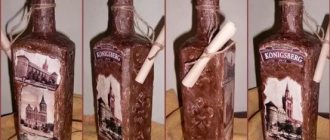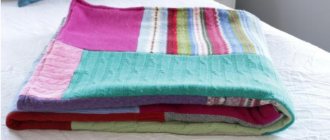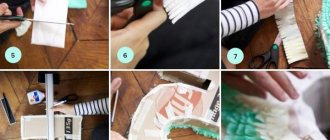Amber is one of the most unusual natural stones, with an interesting history of origin and healing properties. Despite the beauty and warm color of amber stones, jewelry work with them is considered difficult, since due to their fragility the raw material can be easily crumbled or damaged. Taking into account all these nuances, ready-made jewelry and products are expensive, so many fans of the mineral create crafts from amber on their own, resorting to simple methods and available materials. At home, you can create a beautiful pendant, necklace, or even a whole picture from amber chips, if you have patience and natural raw materials.
How to make imitation amber
Exquisite pendants, sun necklaces and beautiful decorative elements are just a small list of what can be made from amber at home. The only thing you need for this is pieces of natural stone. However, the search for natural, high-quality raw materials most often causes difficulties for people trying to create some unusual thing.
If you can’t stock up on real stone, don’t be upset. You can make an imitation of amber yourself by purchasing the following materials:
- polyester resin;
- hardener;
- soft molds;
- clean water at room temperature.
Preparation method:
- 90% resin and 10% hardener in a container and mix thoroughly with a wooden stick.
- If desired, you can add a few drops of water to the resulting mixture to form a pattern and bubbles inside the stone, dye or wood chips for greater beauty. This will give the finished simulation realism.
- The thick resinous mass is poured into molds pre-lubricated with vegetable oil. Leave for exactly 24 hours to harden.
- A day later, the resulting “amber stones” are carefully removed from the molds, wiped off any remaining oil and polished with sandpaper.
This method is good for preparing material used for small decorations and paintings from amber chips.
If you plan to use a large piece of amber as a decorative item or as a large stone for a pendant, you can build an imitation with a frozen insect inside. This method is more labor-intensive and requires the purchase of the following materials:
- pieces of plywood;
- composition for the preparation of polyester resin;
- dye of the desired shade;
- MDF block;
- protective gloves;
- composition for preparing silicone;
- scotch;
- dried insect, such as a butterfly or mosquito;
- cling film;
- sandpaper;
- sharpened tools for shaping stone.
Sequencing:
- First, a mold for the future stone is prepared. Take an MDF block of the required size. A box is constructed from pieces of plywood, the walls of which are firmly fixed with tape. MDF is placed inside the box, glued for reliability. To prevent the silicone from sticking to the wood, the block is wrapped in cling film.
- After this, prepare the silicone according to the instructions and pour the resulting mixture into the box. The product is left for 24 hours until completely dry.
- Using a measuring cup, measure the volume of the mold to calculate the required amount of polyester resin. The resin is prepared according to the manufacturer's instructions, and a dye is added.
- The resulting resin mass is divided into two equal parts. The first part is carefully poured into the mold to prevent bubbles from forming inside the stone.
- The resin is left alone for an hour to thicken, then the pre-dried insect is sent into it. The second part of the resin mass is poured into the mold from above and the workpiece is left until completely dry.
- The hard and dried workpiece is removed from the box and shaped using sharp tools, then sanded with sandpaper. After finishing with grinding, the finished stone is polished.
When using homemade amber stones, you should remember that they do not have healing or magical properties, and can also cause an allergic reaction with prolonged contact with sensitive skin.
Sun stone - amber
Amber stone is the petrified resin of ancient coniferous trees. Since ancient times, it has been used to make a variety of jewelry and household items. This stone is also often called “tears of the sea” and “gift of the sun.”
Reference! Amber has officially confirmed healing properties (this is especially true for raw amber). Amber beads can help cope with asthma attacks, help improve the functioning of the thyroid gland, prevent the onset of a cold, and also get rid of headaches and depression (provided that the stones are in direct contact with the skin).
There are many different shades of this stone, from light yellow to almost black. The most popular is amber, which has a waxy color, transparent and red with a yellowish tint. The rarest and most expensive is blue amber from the Dominican Republic.
Creativity lessons for beginners
Admiring the beautiful products and jewelry made of amber displayed in the windows of jewelry stores, many people do not even suspect that such beauty can be made on their own at home. To create delightful brooches, beads and even roses you will need artificial or real amber, some available materials and, of course, the desire to create.
Lucky necklace
A necklace is a stylish piece of jewelry in the form of a hoop or chain that emphasizes the length of the neck and draws attention to the chest. A homemade accessory made from real or artificial amber will give confidence to any girl and will be an excellent gift for a loved one. To make amber jewelry you will need the following materials:
- pieces of unprocessed amber of various shapes with holes inside;
- pins;
- memory wire;
- flexible silicone cable, hollow inside;
- extension chain;
- clasp;
- decorative metal beads;
- rings.
Manufacturing process:
- Each piece of amber is strung onto a pin, the free edge of the pin is clamped with a tool and a small loop is made. Nibble off the free edge of the pin with pliers so that you end up with a pebble with a loop at the top. Do the same with each piece.
- All prepared amber beads are strung on the wire, threading the wire through the loops. The result should be a dense rope of amber.
- The ends of the amber rope are fixed by stringing a large metal bead on each edge.
- The flexible cable is cut into two parts, each of which is equal to the length of the free edge of the wire. The tubes are placed on the ends of the wire.
- String one small bead along the edges of the necklace, bite off the excess edge of the wire and wrap it, forming a circle. A lock is attached to the first edge, and a chain to the second. The amber necklace is ready.
Beads made of stone
Amber beads are in no way inferior in beauty to other jewelry, but their production takes less time and effort. To create amber beads you will need:
- pieces of real or artificial amber;
- strong thread;
- carbine;
- double ring.
Manufacturing process:
- Beads should be strung on a double thread, fitting them tightly to each other.
- A ring is attached to one end of the thread using a knot, and a lock to the other.
- Homemade amber beads are ready.
You can diversify plain beads by adding large beads of different shades or decorative beads, alternating them with amber ones. In addition, you can take unprocessed amber - the stone looks original and has healing properties.
Weaving jewelry from stones
There are many ways to make amber jewelry at home, but the simplest and most accessible is thread weaving. To work, you only need strong hemp rope and amber pebbles with holes inside. How to weave an original amber product with your own hands:
- One bead is strung on a rope and a “tie” knot is tied. A smaller bead is placed on one end and two knots are tightened underneath it. It is important that the knots fit tightly to the beads, as if fixing them in one place.
- The next pebble is strung on both ends of the rope and again tightened with a knot. Do the same with all amber beads, alternating them in size and color. At the end, a fastener is attached to the edges of the thread.
You can weave an original piece of jewelry at home not only from amber, but also from any other natural stones, combining them with different materials, for example, leather beads, beads or miniature pendants.
Trees made of stones and beads
A tree made of beads, or as many people call it, bonsai, is quite an interesting product that you can put on your table or give to friends. In addition, the process of work is very calming and gives indescribable tactile sensations. In this post, the author will share his secrets of weaving products.
- Actually, now I’ll try to show the process of making a composition from amber, made about a year ago at the request of my friend. Initially there were a number of strings of amber (beads). I gutted it, it’s unnecessary and ugly - what the heck, I’m collecting branches. A bunch of prepared branches looks like this
- Unraveling, unraveling
- I start wrapping threads to create a larger branch from small ones.
- I attach it to the wire, a stem emerges
- The larva of the second tree appeared. Amber is different, it was designed that way on purpose.
- I fill the stems with rotband in the form. It stands strong, you can kill it with a stand))
- And now all the branches are covered with foil and we move on. The lower part of the barrel is made from a ready-made modeling mixture that hardens in air.
- Then a bit of relief and acrylic paints. varnish on top
- The stand was decorated with pieces of poplar bark (it was very useful to saw poplars in the yard) and moss
- Closer. I think it turned out very well))
- The crown of one of the trees close up
- Well, this is already the result. There was a better photo somewhere, but I couldn’t find it. No matter how hard I tried, I couldn’t convey the play of amber; it looks much prettier in life. The design is about 30 cm high.
- Well, and a few more trees. This is one of the first. Gave it to my friend
- A small but very sunny tree. Also a gift
- Also small. It seems like an interesting combination of garnet and chrysoprase.
- And this is actually made of cut glass. But the photograph is not visible, but it shines and hurts the eyes. It turned out to be a New Year's gift.
- White cat's eye and some other transparent blue stone give an interesting effect in the sun - the tree seems to glow from within
- Gothic style)) Burgundy translucent beads look like droplets of blood
- Sakura. Lives with me)
- She's close. Now do you understand why I love beads so much, not in the form of baubles and decorations, but in the form of twigs and leaves? He lives an absolutely magical life depending on the changing lighting
- In general, I like this business; every tree is “grown” in the literal sense. I like to play with the combination of bead colors, transparency and texture of the stone. Well, the creative process is simply fascinating. And it calms the nerves)) I’ll end with this.
Source: https://umelye-ruchki.ucoz.ru/publ/biser/derevja_iz_bisera/derevja_iz_kamnej_i_bisera/49-1-0-2215
How to make a painting from amber with your own hands
Amber is an amazing stone from which not only jewelry is created, but also charming interior items: boxes, figurines and paintings. If during the process of making jewelry several amber pieces remain unclaimed, you should not throw them away. You can create a wonderful picture using amber chips. This will require patience, accuracy and the following materials:
- PVA glue;
- tempera paints;
- amber crumb;
- the base is canvas, fiberboard or a section of a tree trunk.
How to create a picture from amber with your own hands:
- On the base, using a thin pencil, you should make a rough sketch of the picture, drawing out small details. It is advisable to choose a landscape where warm shades of amber would be appropriate: autumn forest, sunset, image of a deer. If you lack confidence in your abilities, you can buy a ready-made painting and add amber to it.
- Then they begin to draw the picture itself, applying paint to the surface. Once finished, you should let the work dry.
- After the paints have dried, they begin laying out the amber. Having outlined individual areas, glue is applied to them, and then amber chips are applied. You can’t smear the whole picture with glue and sprinkle stones on top - the work will turn out sloppy. First lay out the large pieces, and then the small ones.
- Having finished with the layout, you should carefully examine the picture for gaps and defects and correct them. If the work is done on a piece of wood, additional varnishing at the end and sanding before painting will be required.
Amethyst tree (history of creation)
One day I came to see my friend, whom I met at the 1C: Enterprise course, and met Natalya Kulikova , a wonderful master of applied arts, as her guest. We started talking and became friends very quickly, because... he is a very positive and bright person. The highlight of Natalya’s work already at that time was grandiose embroidery of icons from beads , large, serious works (more than 30 pieces) , but what attracted my attention most were >>>trees woven with wire with crowns made of semi-precious stones.
Natasha is one of those people who doesn’t hide her secrets in needlework and doesn’t worry much about competition. ???? When she saw my genuine interest, she shared her skill with me. On one of my free days, I came to visit her, we talked, drank tea, and then the fascinating process of turning ordinary beads into trees began.
Having received the basic knowledge for work, I returned to my place and slowly, after everyday work, in the evenings I began to weave twig after twig from wonderful amethyst stones. It must be said that this process is not as simple as it seemed at first glance.
The workpieces turned out crooked, and the wire hurt my fingers. The way out of the situation was to change one brand of wire (we took a regular PV-2 cable from an electrical store) to another, softer one. The work went faster, but still it was not easy for me, as a beginner in this matter.
There was enough material in total (there were pebbles about the size of a 100g jar of Dove face and body cream) for 65 branches. The craftswoman herself helped me put it all together into a magnificent tree. Thank you so much for everything! ????
Process
consisted of all the blanks being laid out in several piles, then adding several pieces together to form larger branches. Everything was secured with glossy sewing threads (you can use floss).
It should be noted that the soft branches were not simply folded one against the other, but were necessarily connected to a thicker wire. This created a strong frame.
Thus, all this was collected and fastened together, forming a tree.
A napkin was placed at the bottom of the pot (it also has a separate role in this process). We put the tree in a pot, filled the “roots” and the bottom of the trunk with gypsum mixture.
To prevent the container from bursting due to the reaction that occurs when the gypsum hardens, you need a tissue pad like this. ???? When the plaster hardened, our tree was firmly strengthened. All that remained was to cover the gypsum filler with decor.
To do this, we used PVA glue, sprinkled with a handful of stones.
This is the kind of bonsai I made from gems. :)
Thank you for your attention! If you do something similar with your own hands, please tell us about your experience in x below
This news is currently being discussed...
loading…
Source: https://uvlekatelnie-bonsai.ru/ametistovoe-derevce.html
How to cut a rose
Amber is a mysterious and amazing mineral that has a special warmth and enchanting magic. Having touched this stone once, you want to touch it again and again, which is why crafts made from amber are especially popular. Craftsmen and craftsmen carve real works of art from the solar mineral, among which amber roses stand out.
Amber is fragile, so creating an amber figurative product is complex and painstaking work.
However, even novice craftsmen can cut out a neat and beautiful rosebud. To create a stone flower, you will need the following materials:
- large piece of amber;
- abrasive wheel;
- felt circle-lens;
- various attachments for the engraver;
- hand engraver;
- sandpaper;
- polishing paste.
Amber carving
To carve a stone rose from an ordinary piece of amber, you need accuracy, perseverance and a little inspiration. Armed with the tools and mentally drawing a beautiful carved flower in your brain, you should proceed to action:
- To make it you will need a large unprocessed amber stone. It can be of any shape, since it must be cut later.
- An even circle is drawn on the amber stone so that a rounded piece can be cut out of it.
- Using tools, remove excess parts and use a cutting disc to round the stone.
- If there are small amber pieces left after work, you should not throw them away - they will be useful for creating beads or paintings with amber crumbs.
- On a round shape, draw an even circle, which is divided into 4 equal parts.
- Then draw 4 segments outside the circle, drawing a curved line from the center to the tip of the lines forming a cross.
- Using a tool, four deep cuts are made in the amber stone - the future edges of the petals.
- Using the tool, continue to work on the petals - cut one groove above the petal and two below. After this, a circle and four lines arranged in a fan are drawn on the surface of the amber stone.
- According to the borders, cut out the remaining four petals from above. Each of them should start with a small depression, gradually intensifying towards the center.
- Having finished with the second row of petals, you should proceed to the third, proceeding in a similar way.
- The finished amber rose is ground and polished using a hand engraver.
Tools and materials for work
To make amber beads with your own hands, you need to prepare:
- epoxy resin (preferably imported);
- organic glass about 1.5 - 2 mm thick to create a shape;
- hardener;
- glycerol;
- fine sandpaper;
- GOI paste.
Reference! Epoxy resin can be purchased at a hardware store or construction market.
To make the desired shape, you need to select a metal object of a suitable shape, press it into the plexiglass and wait until the shape hardens. Then the mold must be lubricated from the inside with glycerin so that the epoxy resin does not stick to it later.
The resin must be thoroughly mixed with the hardener in a ratio of 9:1. Then you should pour the mixture into the mold, add 2-3 drops of water into it and mix with a thin stick, performing circular movements. This will provide the visual effect of amber.
The product must be allowed to harden, then holes must be drilled in the resulting beads. Now you can make jewelry from them to your liking.
Cheap replica or amber: how to determine
Real amber is not only incredibly beautiful, but also has healing properties, which affects its cost. Jewelry and crafts made from natural minerals are expensive, which has become the reason for making imitation stones. Sometimes unscrupulous sellers shamelessly take advantage of this, trying to sell the buyer a cheap fake at a high price.
To avoid becoming the owner of artificial amber, you should know the characteristics and basic properties of a real stone, by which it can be distinguished from a fake one:
- Hardness. If you scratch amber with your fingernail, small particles will separate from it. Such an action will not cause harm to an imitation.
- Electrostatic charge. If you vigorously rub a real mineral on wool or silk, small pieces of paper will be attracted to the stone.
- When exposed to ultraviolet rays, amber exhibits luminescent properties. A fake stone does not have this feature.
- Smell. If you heat natural amber, a pleasant pine aroma will emanate from it. The imitation has no smell.
- Reaction to alcohol. The surface of amber moistened with alcohol becomes sticky and rough. The fake stone is resistant to medical alcohols.
Jewelry and products made from amber have many fans due to the warmth that the stone emits, as well as its external beauty and healing abilities. Given the high cost of jewelry, some people choose to make their own solar mineral jewelry, creating original creations. When working with stone, you must remember that amber is fragile and requires careful handling and accuracy.
Amber is a capricious beauty gifted by nature
The cost of raw amber depends on 4 technical characteristics:
- fragility;
- transparency;
- color;
- presence of inclusions (plants and insects frozen in resin).
The hardness of sunstone is comparable to gypsum, and is 2-3 on the Mohs scale (1 to 10). Due to its fragility, the technology for processing amber is considered complex, because there is always a risk of crumbling the stone. That is why jewelry made from high-quality natural stones was highly valued at all times and was not cheap.
Amber bonsai
If you want to have a bonsai tree in a pot at home, but do not have the opportunity to care for it, then try making it with your own hands from available materials.
We offer you a detailed master class with step-by-step photos on creating a bonsai tree from amber and beads. The process is not quick, so be patient and a wonderful amber bonsai will decorate your interior.
BUSINESS IDEA
Making artificial amber is a marginal option for organizing a profitable business.
What can be made from amber
Amber is a very beautiful stone with different types of colors: pale yellow, lemon yellow, red-brown, blue, even black or green.
The structure of natural stone is heterogeneous: with various bubbles, inclusions, transparency and translucency.
Amber is used to create all kinds of bracelets, pendants, rings, pendants, boxes, paintings or figurines.
Amber
A striking example of interior decoration is the Amber Room, decorated with mosaic boards and wall mosaic panels made of solar stone.
Decorating premises with natural stone is expensive, so you should pay attention to artificial material.
Amber raw materials for the production of jewelry cost from 20 thousand rubles per 1 kg.
Types of imitations
There are several types of real amber, the properties of which are almost identical.
The most popular is Baltic succinite. Also known are species such as Sicilian simetite and Burmese burmite.
Among imitations of solid amber, pressed amber (the so-called “ambroid”, made from amber flour) is popular. It is worth noting polyburn with faturan - created from waste from amber mining with the addition of epoxy and other resins.
Some materials are disguised as amber. For example, polyester, a type of plastic, is disguised as resin or acrylic and painted “amber.”
Baltic succinite
